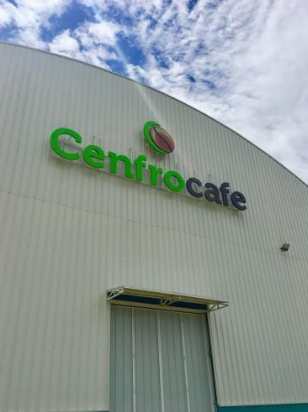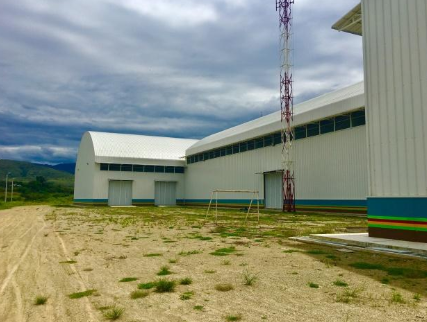The new plant has capacity of producing 2000 QQ per day in 16 hours.
Field trip : Day 2 by Catalina
Arriving 1st of May
Elmer picks me up to take me to the office in Jaen. I didn’t remember that it was 1st May, but they were kind enough to call the people attending Supremo account to meet with me still during their national holiday (I felt pretty bad).
General manager : Ronny Garcia
They have quite a facility here, with a warehouse with capacity to store up to 50.000 QQ. Also there is a lab to control the quality and then the administrative offices.
I met with the General Manager (Ronny Garcia) appointed on 2016 and we have a formal meeting together with Elmer. Ronny explains me how is the structure of Cenfro. It is basically composed by: Board of Directors, Surveillance Council, Education Committee and Electoral Committee.
The president is elected every year and the general manager every 3 years for a max period of 6 years. This is one of principles of the Cooperative Model. To me it’s probably one of the weaknesses of this figure as there is no continuity in the management, but it is like that for all cooperative. The good thing is that so far the commercial area is not changing and it’s been stable for the last years.
Lack of young people
Ronny is in constant communication with the president of the Redes, they meet every month to talk about the developments of the Cooperative. The leader of the Red is in charge of transferring the communications to the presidents of the Associations. Every year they also have 3 General Assembly meetings with the delegates of the Groups.
One of the current topics they are addressing is the lack of young people staying at the field and getting involved in coffee. They are running a project of this topic sponsored by. There are two segments: Producer’s sons and young producers. They teach the Producer’s sons on how to start a local business (pisciculture and growing passion fruit) and part of the cost is financed by the project. On the other hand for the young producers they train them on quality, how to be a barista, and other programs. At the end of the courses, they get the benefit of joining Cenfro at half cost.
Glyphosate
Cenfro is working actively with their agronomists and promoters to identify which producers are the most risky and exposed ones. Those detected will be immediately classified as conventional because Cenfro is not taking any risk to get decertified their whole supply chain because of a few groups. There are constant meetings raising awareness of the consequences of using this product and surprised audits are being handled by their agronomists. There is no flexibility for those ones not meeting the standard; they can be expulsed from the organic program immediately.
On top of this, they will start analyzing all the deliveries of parchment at the collection points, and in case glyphosate is detected coffee will be downgraded as conventional.
They will start testing those lots that we specifically ask, they can do it at the Lab in Lima but also they want to consider sending the sample to Europe. Jenni, please share the contact of CR3 to Elmer and the quality team there.
A new facility in Jaen
After having all these meetings, Ronny, Elmer and Diana are taking me to the new plant of Cenfro finished end of last year. So we jump in the car and drive for about 15 minutes.
Ronny tells me the operational flow of the coffee: They consolidate the lots in Jaen and then truck them to Baua or Piura where they were doing the milling process. At these plants they outsourced the tolling but still with the supervision of Cenfro people. Apparently is a common practice for cooperatives. Norandina is the one giving them these services.
But this year things are changing, as mentioned above Cenfro built a new facility in Jaen, an investment of US 4MM. It is expected than this crop they can produce 70% at the new facility. This will allow a better quality control as all the consolidation will be done in one area and 100% controlled by Cenfro.

The new plant has capacity of producing 2000 QQ per day in 16 hours. For campaign they can reach 500.000 QQ. With the current volume of Cenfro they meet the equilibrium point, but the plan is to grow by 7% to recover the investment.
Also with this new plant Cenfro might enjoy of some tax relief, because the Government in Peru benefits those companies within the Amazonia region with 10% taxes instead of 30%. The only requirement is keeping 70% of the economic activity within the region.

